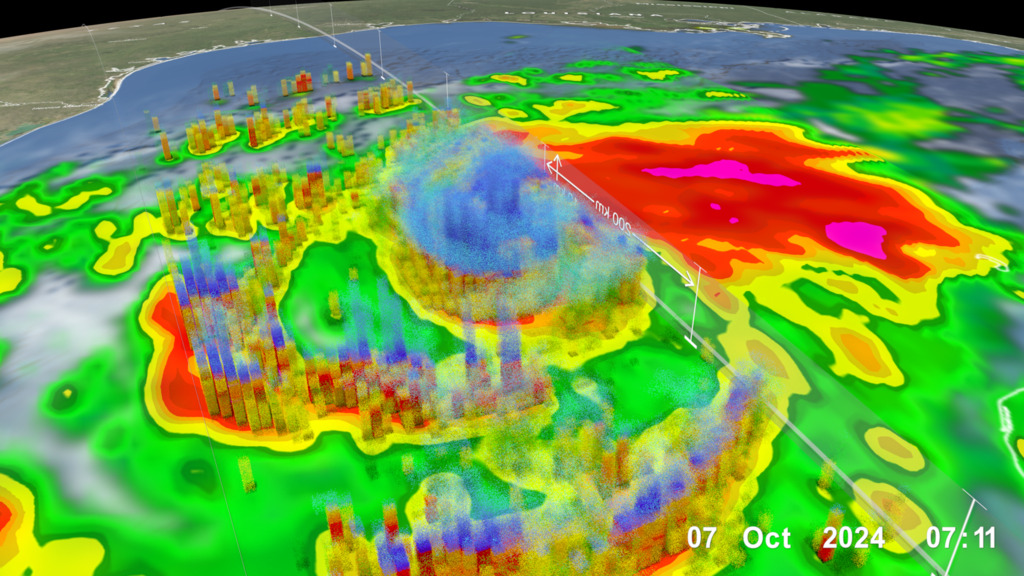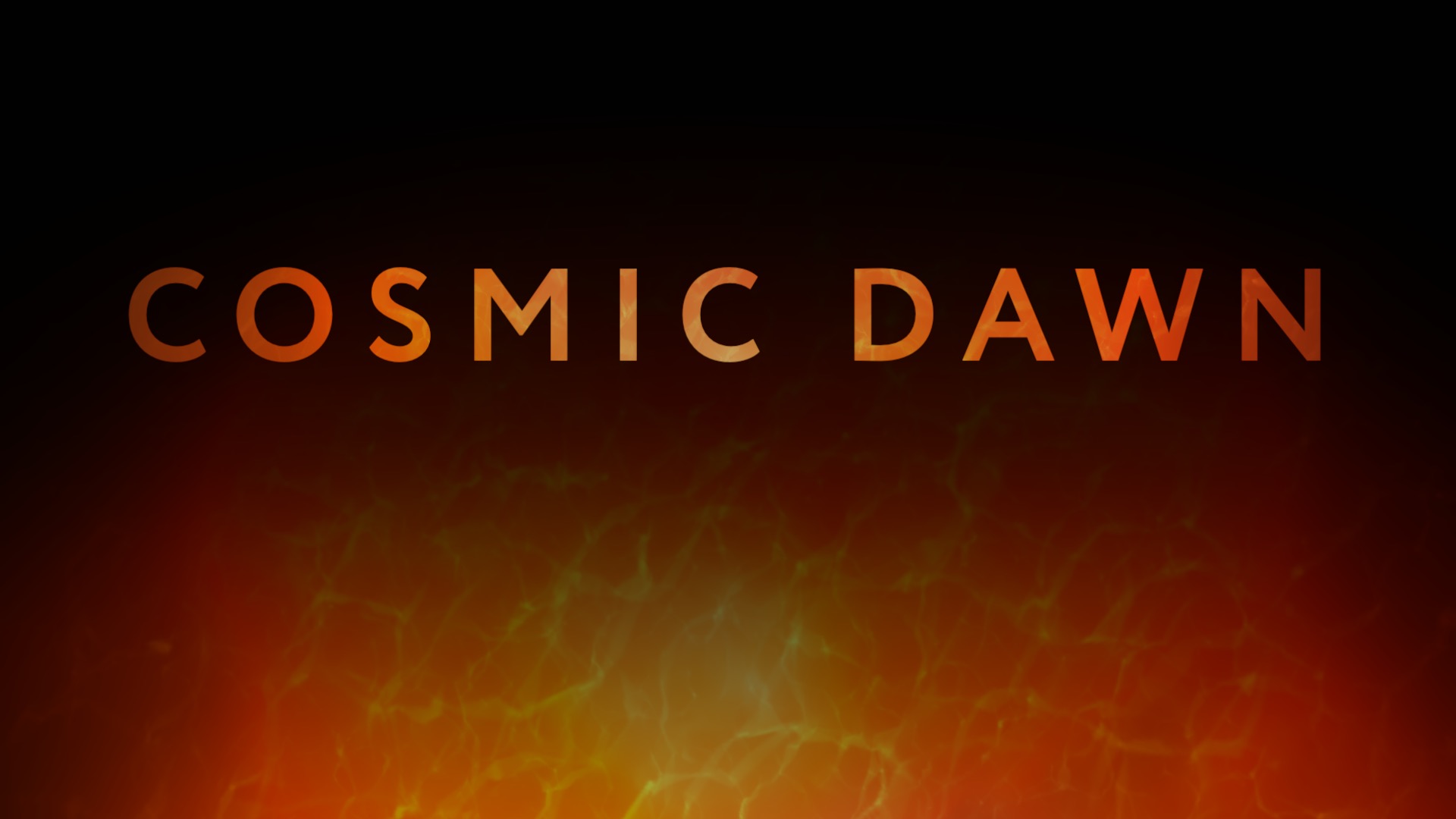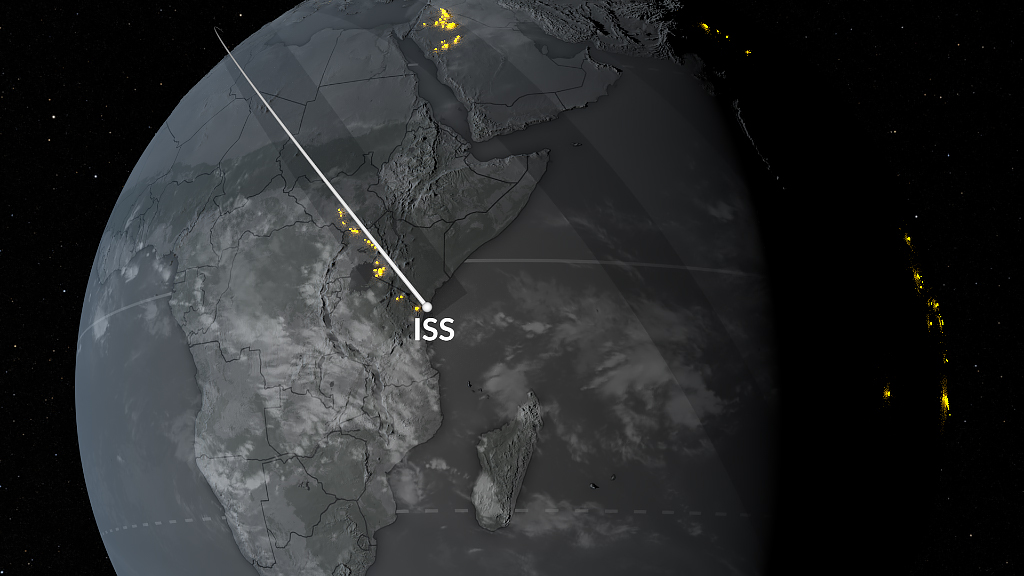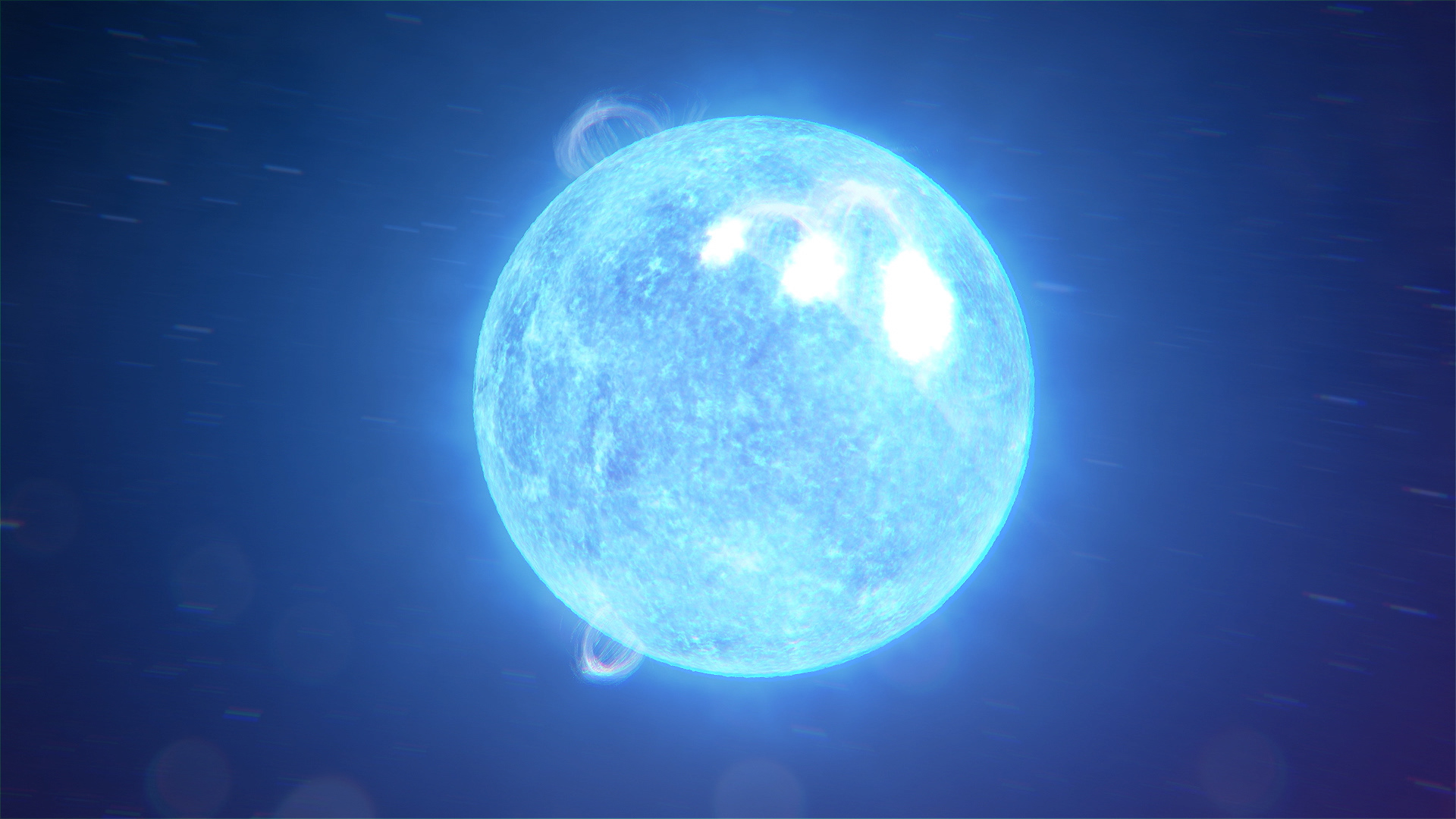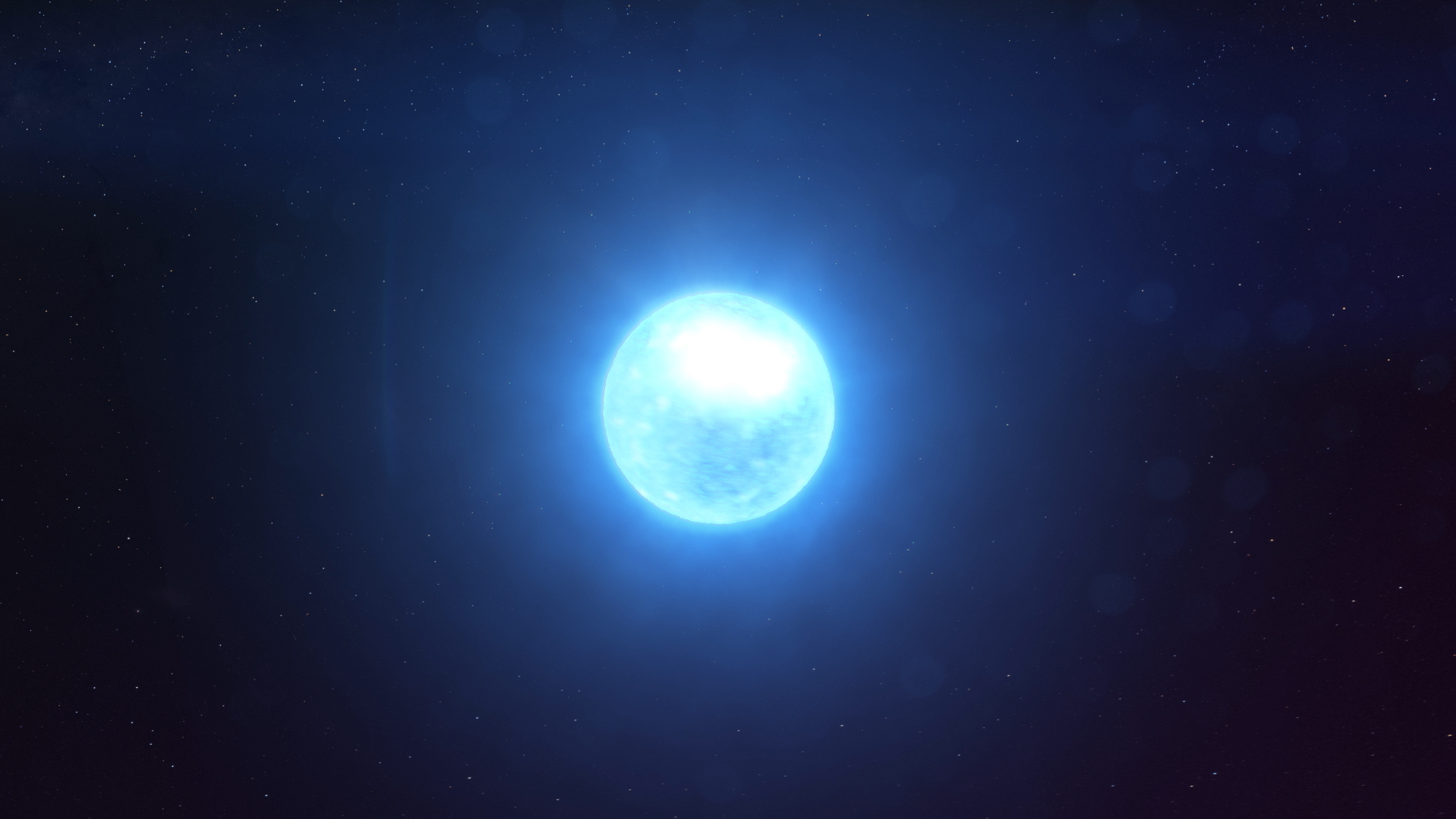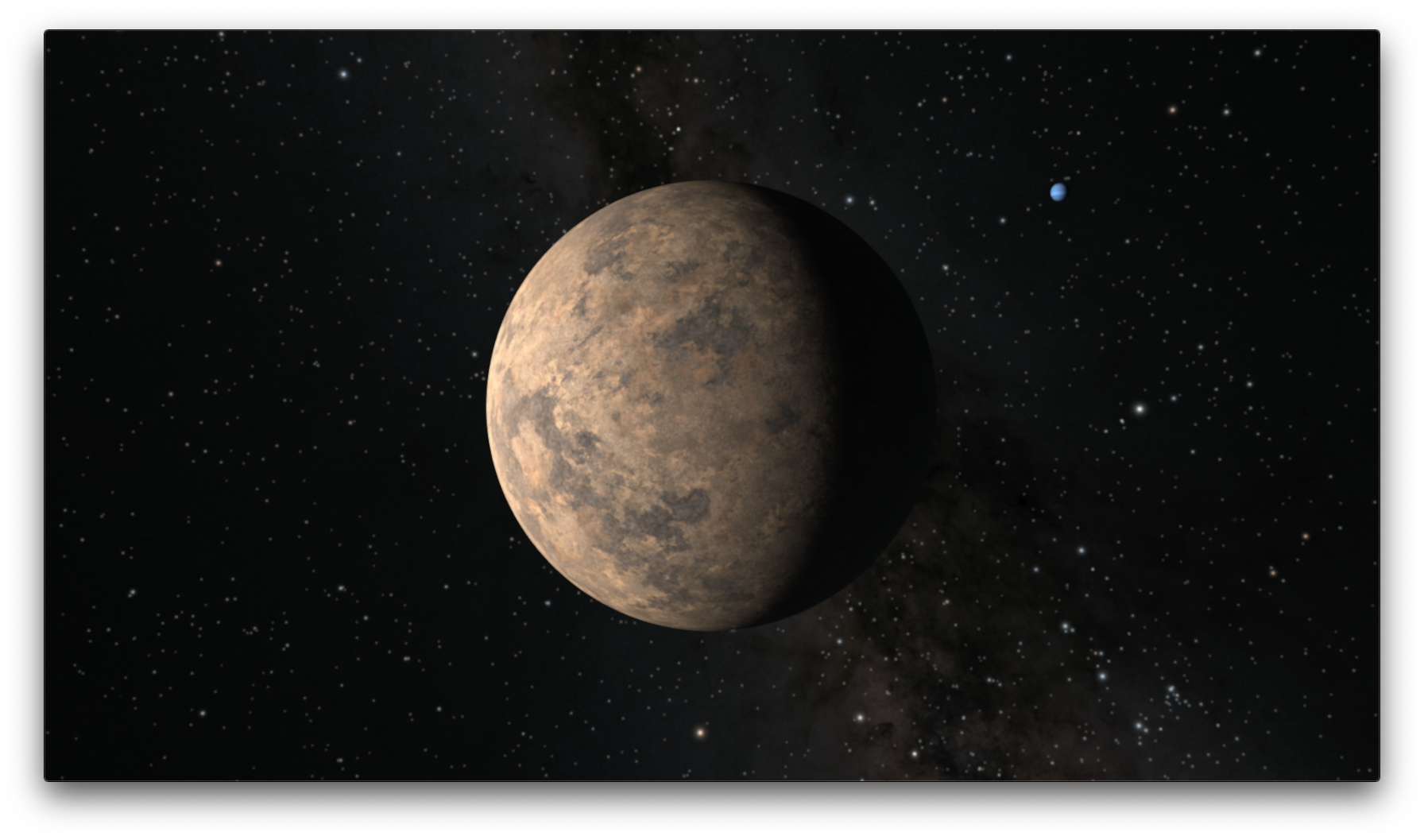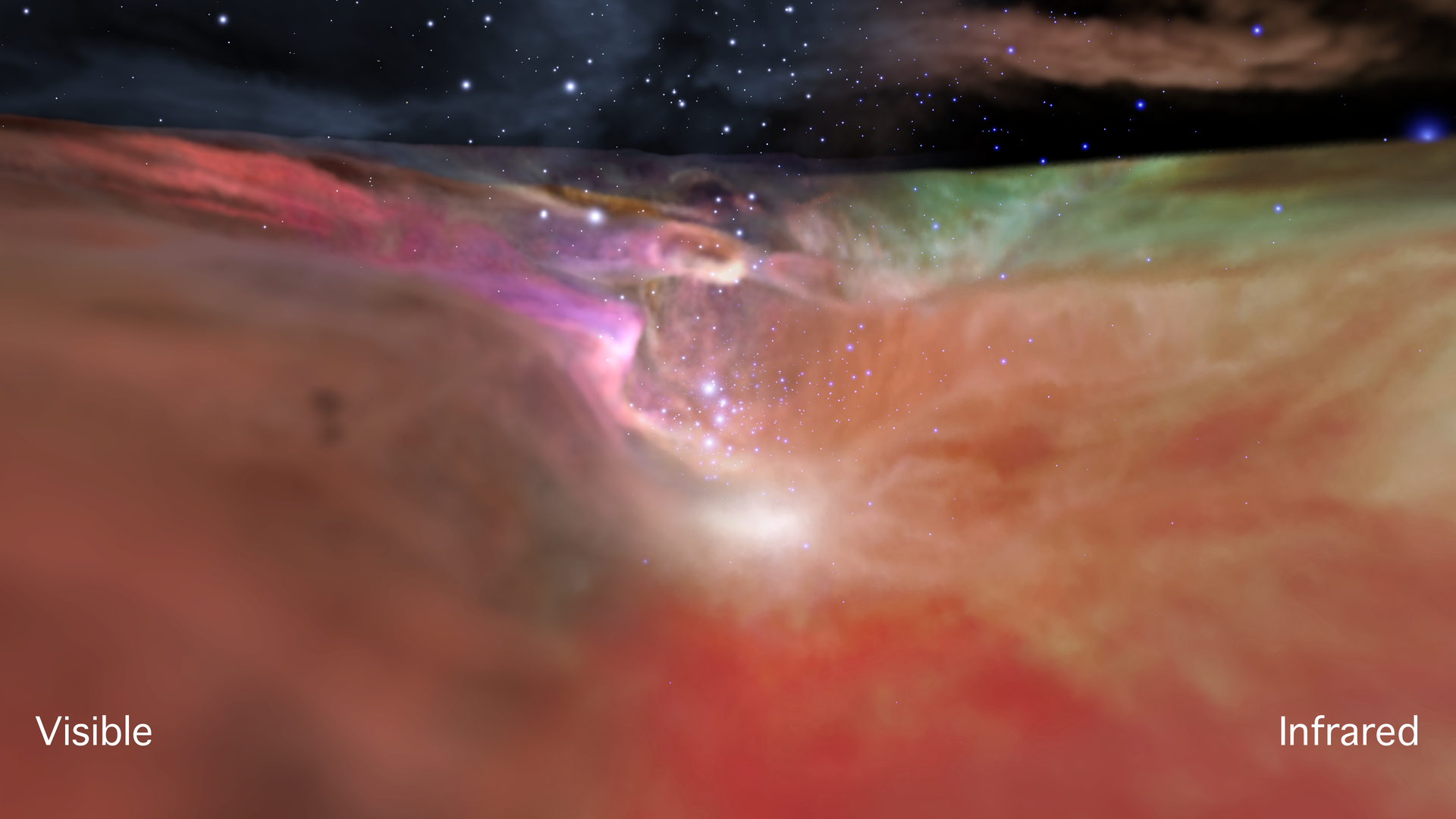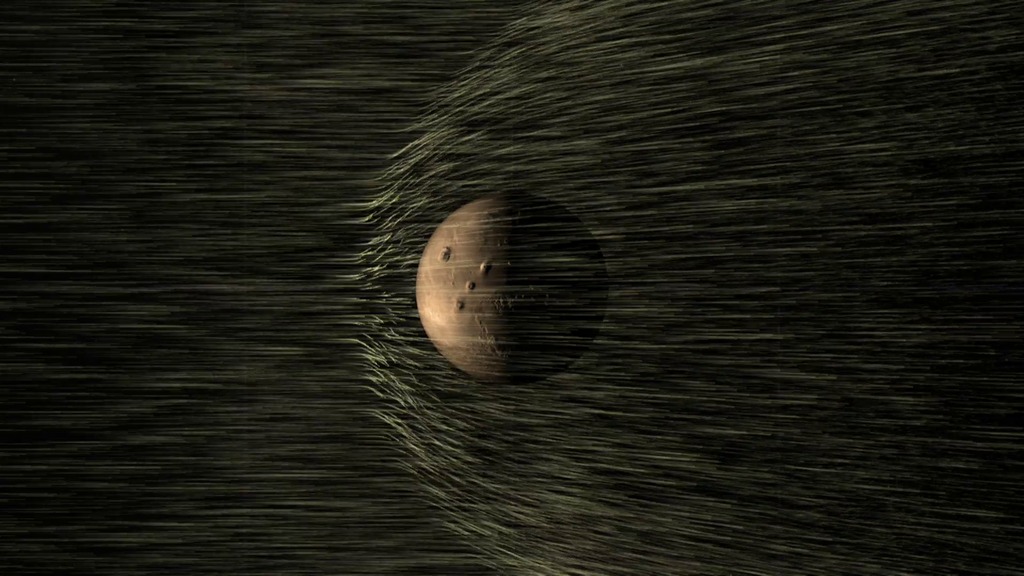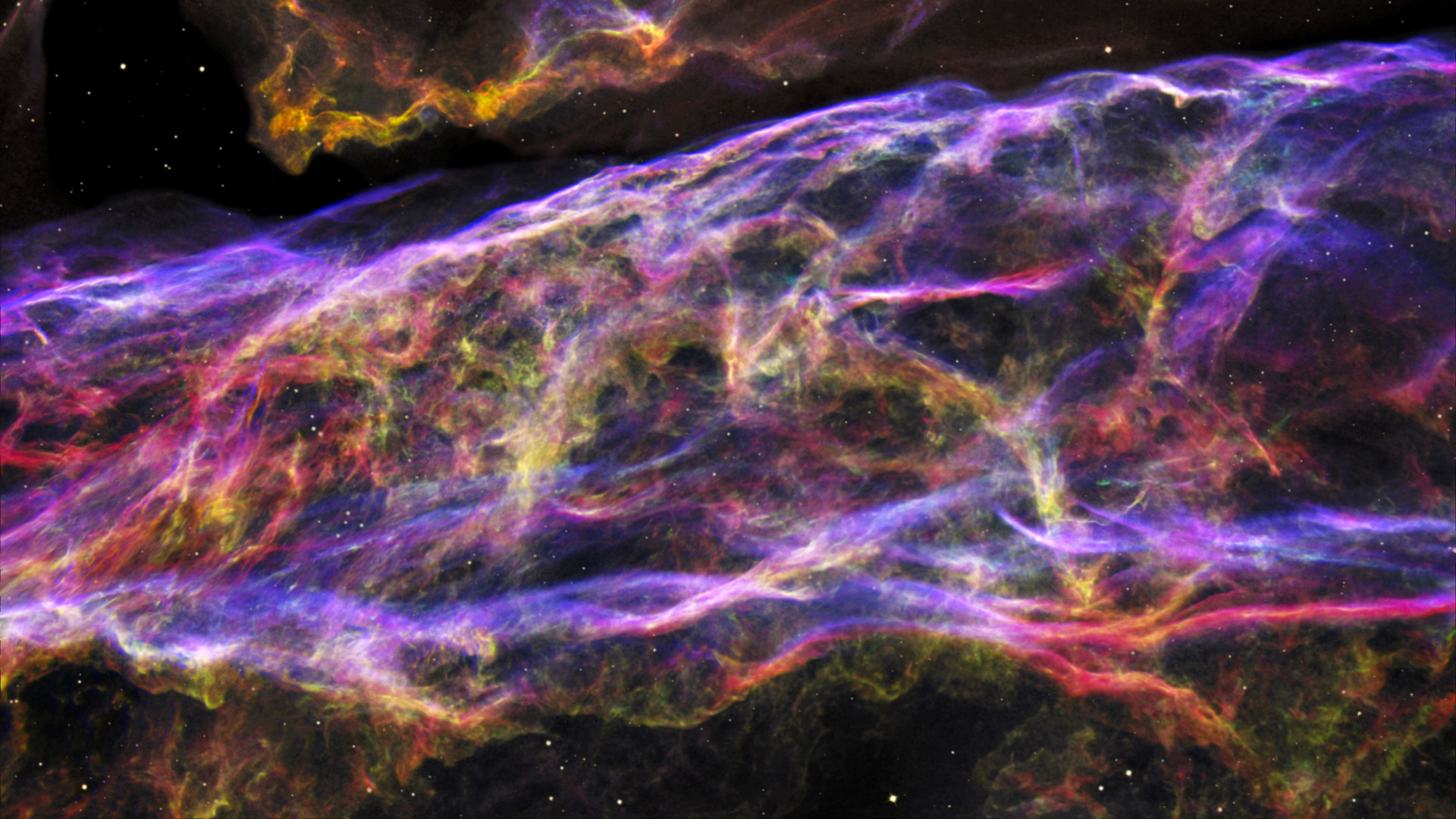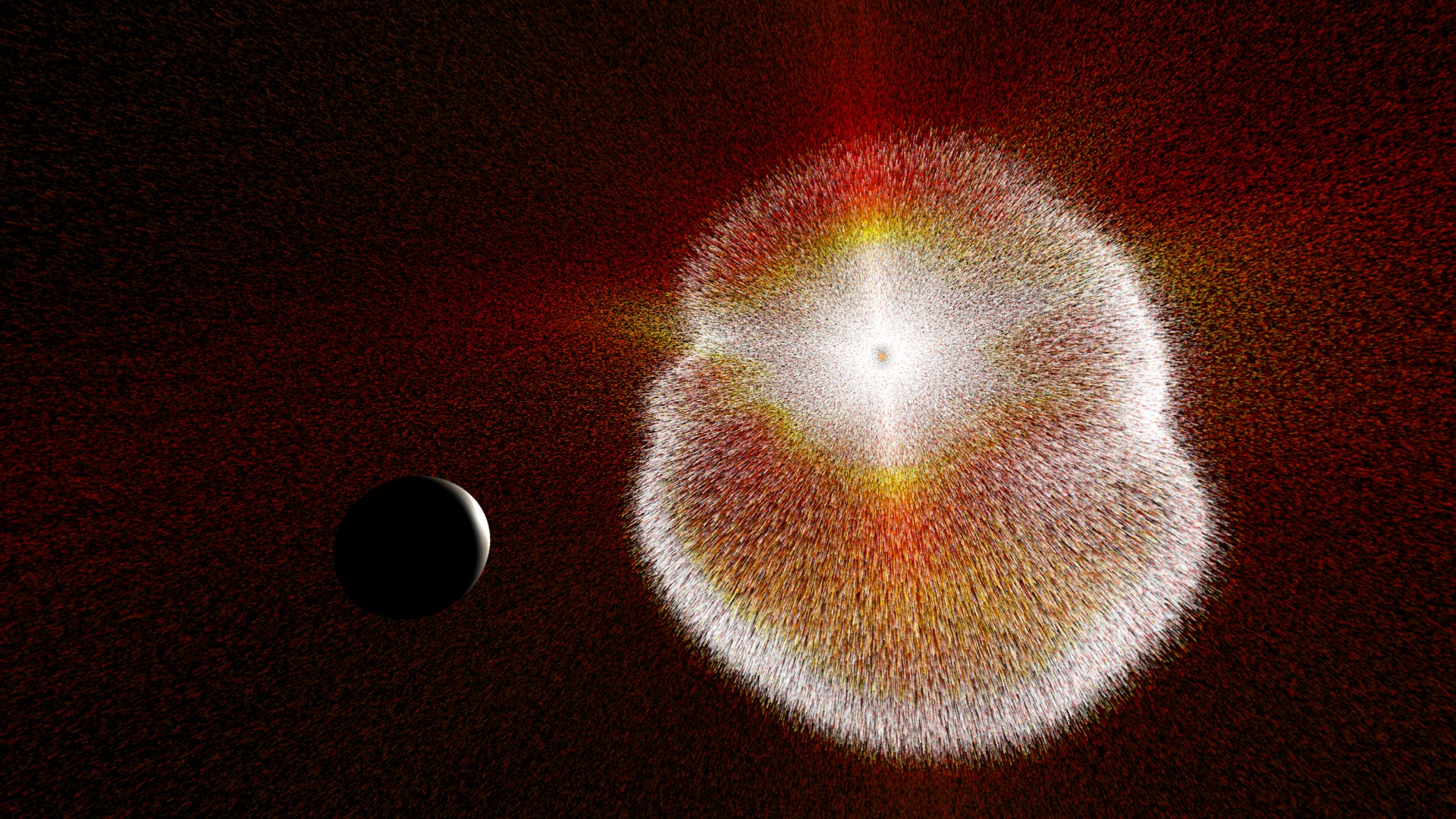Earth to Space: A National Symphony Orchestra Concert
Explore the vastness of space with music inspired by the planets, stars, and beyond! In anticipation of the upcoming voyage of Artemis II, the National Symphony Orchestra celebrates the discoveries and beauty of space through music and images produced by NASA. Explore this page to learn a little more about the visuals utilized in the Earth to Space Family Concert.
Grand Canyon Suite: Cloudburst by Ferde Grofé
Inspired by the powerful forces of storms on our planet Earth, the film that accompanies Grand Canyon Suite: Cloudburst utilizes NASA data visualizations that reveal the science behind hurricanes and lightning. NASA has several missions dedicated to understanding Earth's weather, operating remote-sensing satellites and instruments that provide observational data to the world's scientists.
This data has been brought to life for you to see below.
This visualization begins with an image sequence of cloud and lightning images of Hurricane Ian created by Cooperative Institute for Research in the Atmosphere (CIRA) and NOAA. The image sequence fades to show the volume of humidity (shown in blue) along with the wind flows near the surface. As the camera pulls back we see the humidity in a 9 degree by 9 degree region off the western coast of Florida. A box containing this region gradually grows in altitude showing the fast wind circulation above the humidity volume up to an altitude of 17 km.
Hurricane Milton on October 8, 2024 at 19:41Z.
This visualization of the density of precipitation within Hurricane Milton was created with data from the Global Precipitation Measurement (GPM) Core Observatory satellite. This satellite, launched in 2014 in partnership with the Japan Aerospace and Exploration Agency, is used to understand weather, disaster events and environments around the globe.
Global lightning events detected by the LIS on the ISS between March 2017 and July 2023. Movie in 4096x2048 resolution for SOS display.
Learn more about how NASA studies lightning and see more lightning data visualizations here.
Eridanus by Eunike Tanzil
Inspired by the "Celestial River" constellation Eridanus, composer Eunike Tanzil debuts this piece at the Kennedy Center with the National Symphony Orchestra's Family Concert. Images used in the accompanying film were sourced from the NASA/ESA Hubble Space Telescope and NASA's James Webb Space Telescope. Provided images from the NASA/ESA Hubble Space Telescope may be found here and images provided from NASA's James Webb Telescope may be found here.
Visualization of a small region of the Veil Nebula, a supernova remnant
This 3-D visualization flies across a small portion of the Veil Nebula as photographed by The Hubble Space Telescope. This region is a small part of a huge expanding remnant from a star that exploded many thousands of years ago. Hubble reveals tangled rope-like filaments of glowing gases.
The 3-D model has been created for illustrative purposes and shows that that the giant bubble of gas has a thin, rippled surface. It also highlights that the emission from different chemical elements arises from different layers of gas within the nebula. In the imagery, emission from hydrogen, sulfur, and oxygen are shown in red, green, and blue, respectively.
Master Version
Horizontal version. This is for use on any YouTube or non-YouTube platform where you want to display the video horizontally.
Dr. Macarena Garcia Marin presents the latest James Webb Space Telescope images of the Horsehead Nebula, showcasing the intricate details and structures that were previously unseen.
These new observations offer deeper insights into the formation and evolution of this iconic nebula, enriching our understanding of stellar nurseries. The discussion also highlights the scientific significance of these findings, bringing complex astrophysical concepts into clearer focus.
Firebird by Igor Stravinsky
This performance of the last three movements in Stravinsky's Firebird take the listener through darkness and into the dawn. Using NASA visuals, the accompanying film showcases many of the missions and science focuses of NASA, from studying the very beginnings of the universe, through distant nebulas and black holes, and back to our own solar system. While based on real data, all visualizations below are artist's concepts of these phenomenon.

This artist's concept shows how the universe might have looked when it was less than a billion years old, about 7 percent of its current age. Star formation voraciously consumed primordial hydrogen, churning out myriad stars at an unprecedented rate. NASA’s Nancy Grace Roman Space Telescope will peer back to the universe’s early stages to understand how it transitioned from being opaque to the brilliant starscape we see today.
Credit: NASA, ESA, and A. Schaller (for STScI)
Alt text: This illustration depicts a mesmerizing and chaotic cosmic scene, filled with misshapen clumps and twists of white and purplish material on a black background. Most of the clumps are small, but a particularly large conglomeration extends from the lower-right of the frame up to the middle and nearly all the way across to the left side, sort of like billowing clouds. It's full of bulbous shapes outlined with glowing lavender tendrils. Bright groups of stars are concentrated in the center of each lobe, and also scattered more sparsely throughout the surrounding area.
This visualization flies through a 3D model of the Orion Nebula based on visible light observations from the Hubble Space Telescope.
This visualization explores the Orion Nebula in visible light recorded from the Hubble Space Telescope.
The camera flies into the star-forming region. The glowing gaseous landscape has been illuminated and carved by the high energy radiation and strong stellar winds from the massive hot stars in the central cluster. The higher resolution visible observations show finer details including the wispy bow shocks and tadpole-shaped proplyds.
Explore how NASA’s Neutron star Interior Composition Explorer (NICER) tracked brilliant hot spots on the surface of an erupting magnetar – from 13,000 light-years away.
Credit: NASA's Goddard Space Flight Center
Music: "Particles and Fields" from Universal Production Music
Watch this video on the NASA Goddard YouTube channel.
Complete transcript available.
A magnetar is a type of isolated neutron star, the crushed core left behind when a massive star explodes. Compressing more mass than the Sun’s into a ball about 12 miles (20 kilometers) across, a neutron star is made of matter so dense that a teaspoonful would weigh as much as a mountain on Earth.
What sets magnetars apart is that they sport the strongest magnetic fields known, up to 10 trillion times more intense than a refrigerator magnet’s and a thousand times stronger than a typical neutron star’s. The magnetic field represents an enormous storehouse of energy that, when disturbed, can power an outburst of enhanced X-ray activity lasting from months to years.
This animation shows HD 21749 c, an exoplanet about 89% Earth’s diameter. It orbits HD 21749, a K-type star with about 70% of the Sun’s mass located 53 light-years away in the southern constellation Reticulum. A second, bluish exoplanet in the same system, HD 21749 b, appears briefly in the background.
Credit: NASA/JPL-Caltech/R. Hurt (IPAC)
This movie shows the approach to a black hole surrounded by an accretion disk. Ripples and waves in the disk are caused by turbulent instabilities in the orbiting material, which is hottest and brightest along the inner edge of the disk.
This visualization shows the strange ways that light is gravitationally warped in the region around a black hole surrounded by a rapidly-rotating disk of gas and dust. Learn more about this visualization and the science behind black holes here.
Conceptual Animation
A conceptual animation of Parker Solar Probe making its closest approach to the Sun.
Credit: NASA/Johns Hopkins APL/Steve Gribben
Controllers have confirmed NASA’s mission to “touch” the Sun survived its record-breaking closest approach to the solar surface on Dec. 24, 2024.
Breaking its previous record by flying just 3.8 million miles above the surface of the Sun, NASA’s Parker Solar Probe hurtled through the solar atmosphere at a blazing 430,000 miles per hour — faster than any human-made object has ever moved. A beacon tone received in the late evening hours of Dec. 26 confirmed the spacecraft had made it through the encounter safely and is operating normally.
This pass, the first of more to come at this distance, allows the spacecraft to conduct unrivaled scientific measurements with the potential to change our understanding of the Sun.

A coronal mass ejection erupts from the Sun.
A giant explosion of magnetic energy from the Sun, called a coronal mass ejection, slams into Mars and strips away its diminished atmosphere.
LEAD: NASA scientists have identified the process that changed Mars from a warm and wet Earth-like planet to a cold, arid world.
1. New results from NASA’s MAVEN mission show the Martian atmosphere has been stripped away by a stream of particles, known as the solar wind, flowing from the sun at a speed of about one million miles per hour.
2. The Martian atmosphere has escaped from different regions of the Red Planet, including down the "tail," where the solar wind flows behind Mars, and above the Martian poles in a "polar plume."
(Note: Atmospheric losses in the “tail” and “polar plume” region are rainbow-colored in the video.)
TAG: Fortunately, Earth's atmosphere is protected from the solar wind effects because it has a magnetic field, which acts as a shield and deflects the stream of particles blowing off the sun.
Credits
NASA Goddard Space Flight Center. Credit to those that created individual elements utilized in the Earth to Space NSO Family Concert Films, which can be found under the page sources.
-
Producers
- Sierra Bouchér (NASA Goddard)
- Beth Anthony (eMITS)
- Scott Wiessinger (eMITS)
- Elizabeth C. Wilk (eMITS)
- Wade Sisler (NASA/GSFC)
Release date
This page was originally published on Friday, March 28, 2025.
This page was last updated on Friday, March 28, 2025 at 2:31 PM EDT.


